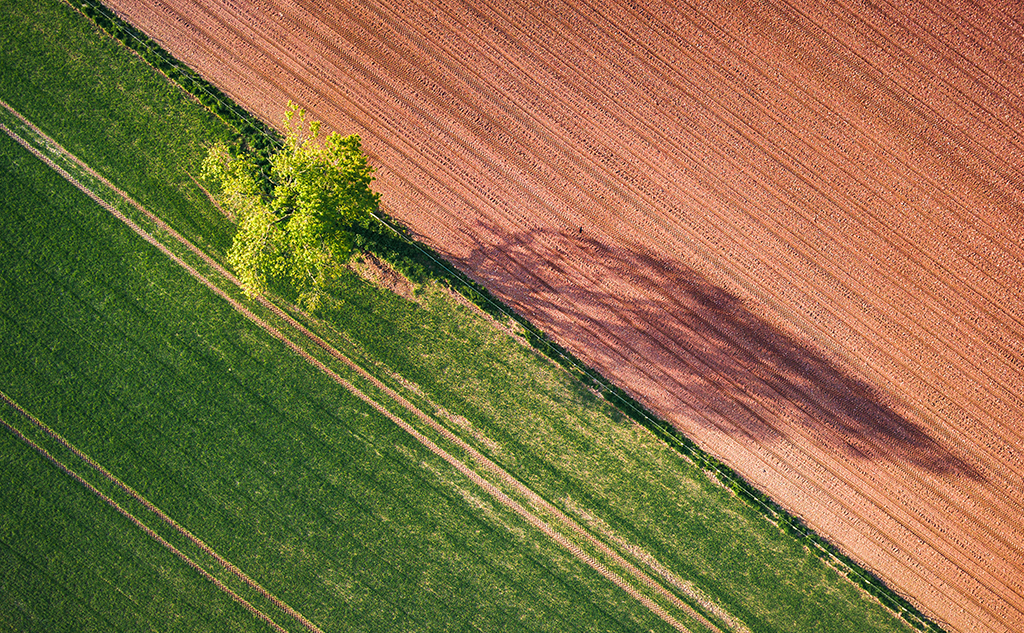As of today, between 60% and 70% of Europe’s soils are reported as being in poor condition. As part of its new dedicated strategy adopted at the end of 2021, followed by the ‘Santé des sols et Alimentation’ [Soil health and nutrition] mission and the draft law ‘ Santé des sols’ [Soil health] currently in process, the EU aims to reverse the trend to attain 75% of soils “healthy or significantly improved” by 2030. Given this goal and the short timescale, what forms of solution may be envisaged?
Soil’s ecological role
As a source of biomass, soil forms the foundation of our nutrition as well as providing us with raw materials and energy. Soil also comprises an important reservoir of biodiversity, holding one-quarter of known biodiversity. Finally, soil plays fundamental roles in regulating the water cycle and as a carbon store.
The main soil degradations
However, soil is a non-renewable resource under great pressure. The European Soils Observatory (EUSO) has evaluated and mapped the health of European soils based on fifteen indicators around nine themes: erosion (agricultural activity, fire, wind etc.), pollution (copper, mercury…), nutrients (nitrogen, phosphorus…), loss of organic carbon, loss of biodiversity, compaction, salinisation, loss of organic soils, and loss of permeability. The result is that loss of soil’s organic carbon is the most significant, followed by loss of biodiversity and degradation of peat bogs. Furthermore, the indicators are most commonly cumulative. As a reminder, in its global assessment report on the state of life on our planet (2019), IPBES* suggested that soil degradation had already reduced the productivity of the whole of the world’s land surfaces by 23%.
Focus on : the future law on soils health
Provided for in the new soils strategy up to 2030 adopted in November 2021 by the European Commission, the Soil Health Law – to be finalised mid-2023 – aims to specify the conditions for a healthy soil, to determine the options for soil monitoring and to set out the rules encouraging the sustainable use and restoration of soils. It must then develop a complete body of European law for the protection of soils, and ensure the same protection is given to soil resources as is given to air and water.
Monitoring and restoration: the two key points
As of today, the conventional networks for soil monitoring principally measure chemical parameters but do not take account of the many biological and physical parameters that are nonetheless essential in the evaluation of soil health. Alongside this, monitoring methods differ between member States. This was the observation that launched the “Soil Health Benchmarks” project, led by a consortium of 29 partners. The objective of this project was inter alia to propose a clear and simple-to-use tool for evaluating the health of soils and to define appropriate and relevant indicators to take account of the differences in soil usage and climate across Europe, all with a view to harmonisation.
The actual restoration activity can take several forms. Among these is agroecology, which amongst other things reduces the use of pesticides and gives soils their proper functions in the water and carbon cycles. But equally, there is the renaturing and construction of fertile soils. These are referred to as reconstituted and constructed anthroposols (or “technosols”) reconstituted anthroposols are the product of soil materials that are excavated then deposited in the area to be reconstituted. The fertility of excavated soil materials can be particularly improved by organic amendments such as compost, which contribute to the stability of the aggregates, availability of nutrients and microbial activity. As a reminder, standard NF U 44-551 A4 defines material types based on their organic material content (e.g. : “topsoil”, “sandy soil”). Constructed anthroposols derive from the use of mixtures of recycled anthropogenic materials.
By way of example, Microhumus has developed a specific solution to re-vegetate soils and degraded environments by recycling materials in situ, restoring the physical functions of the soil, and revegetating and rehabilitating ecosystem services. The company also offers a topsoil solution produced from quarry tailings, mineral washing sludges and construction site waste to which are added organic amendments, in a rough ratio of 70% to 30%. This topsoil is formulated case-by-case, as it needs to be adapted from country to country to align with regulatory variations or how the mineral industry is organised.
New technologies nurturing soil health
We should also note that there is already a rating agency for agricultural soil health: the young company Genesis has developed a diagnostic method for the condition of soil health in order to monitor the impact of practices and assure the sustainability of soil use. For its part, Biomede, originally dedicated to agricultural soil depollution through phytoextraction, is working on an AI able to perform soil diagnostics from satellite images. Alongside this we should also note the work being led by the University of Kiel to develop an in situ sensor able to monitor nitrates, ammonium and phosphates (the “Soil Monitor” project).
*IPBES: Intergovernmental Science-Policy Platform on Biodiversity and Ecosystem Services.




